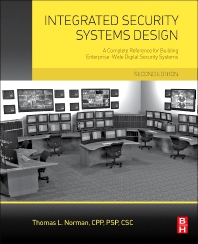When a partnership is formed between two already strong organizations, it’s kind of like that much-anticipated moment when they first come together. You just know it’s going to be a great relationship.
We hear and read about partnerships almost every day in the security industry — from mergers and acquisitions, to disparate businesses coming together to provide brand new services, to the blending of technologies that results in a higher quality or more robust product.
In this issue alone, there are several examples that seem like they will be successful partnerships:
Convergint Technologies, ranked No. 5 on SDM’s Top Systems Integrators Report, acquired No. 71, Qualified Systems Contracting, giving Convergint a strong presence in the Florida market. (More on page 17.) A win-win for these systems integrators and their customers.
In another announcement, FLIR Systems teamed up with VideoIQ to put the power of analytics inside of FLIR’s thermal imaging cameras. “FLIR’s thermal cameras extend the use case of VideoIQ into dark environments and the other way around,” said a FLIR representative. (More on page 100.) Again, a win-win for the security market, and a prime example of technology-partnering at its best.
The most exciting partnership news I have heard in a long time is the meeting of minds between the Partnership for Priority Video Alarm Response (PPVAR) and the Central Station Alarm Association (CSAA) International. (More on pages 17 and 57.) At the recent CSAA International annual meeting held in Quebec City, PPVAR representatives met with CSAA members to discuss the future of video verification. The key issue at hand: establishing one unified voice and purpose with which the security industry could address other stakeholders such as law enforcement. On October 14, the CSAA board of directors voted to take initial steps establishing PPVAR as a standing committee within the association.
This first meeting of the minds between CSAA and PPVAR is like watching a love story unfold, in which two people who were meant to be together kiss for the first time. The anticipation had been tense at times: CSAA and PPVAR cover much of the same ground when it comes to improving alarm verification and alarm response, so there was ample opening for the organizations to potentially step on one another’s toes. Yet, each group has its strengths and it seemed inevitable that they join forces.
CSAA has existed since 1950 as a trade association representing providers, users, bureaus, and other agencies of central station protection services that are certified by a CSAA-approved Nationally Recognized Testing Laboratory. CSAA is legally entitled to represent its members before Congress, regulatory agencies and other authorities having jurisdiction. These are CSAA’s strengths in the development of alarm verification and response policies; as well as the collective knowledge and experience of hundreds of CSAA members who operate central monitoring stations.
PPVAR is much newer, having been formed just a couple of years ago, specifically to educate all electronic security stakeholders about the value of video to verify alarm activity during the dispatch process and ultimately reduce false alarms and increase apprehension rates for burglar alarm customers. The strength that this group brings to the partnership is its recent experience at the grass-roots level, spreading the word like gospel about the benefits of video verification and getting agencies to enact policies that place a video-verified alarm as a priority dispatch.
The timing of this first agreement is important because, as SDM Senior Editor Heather Klotz-Young writes in this month’s cover story, “Video monitoring’s proactive nature and broadened capabilities are driving real-world services for the industry to offer — with results that are getting attention.”
Video monitoring, whether applied for alarm verification or live, ongoing surveillance, is gaining traction. The entire security industry will benefit from the combined strengths of these two organizations. Kudos to CSAA and PPVAR for working through their differences and acknowledging that they will be stronger together than alone.
In This Issue
Today’s video monitoring is maturing into a valuable, executable service offering that falls under the RMR business model, making it appealing to both security dealers and systems integrators. The state of the market is one of active growth via new technologies, expanding services, maturing sales approaches, and success stories of money saved and arrests, writes Heather Klotz-Young in this issue’s cover story, “State of the Market: Video Monitoring,” beginning on page 46.









